Power Plans are customizable settings that dictate how your computer uses power in different situations. These plans can be changed as per our needs allowing us to create a balance between the battery life and performance. In this post, we will dwell on Power Plan and see how you can delete them.

Power Plans on Windows 11/10 computers

All PCs have some power plan that is set to a default setting, it could be a balance between power consumption and system performance or any other option. In Windows 11/10, the user has the option to change the power plan to suit their personal needs. Power plans can be tweaked to a user’s preference based on what the user is trying to get. Power plans activate in certain hardware and system changes or based on a user’s overall preferences. Power plans can be set to activate or change certain things such as when the PC goes to sleep, screen time off, hibernate, etc.
Power plans can help your PC last longer overall because certain hardware can be set to rest if not in use for a certain amount of time. Power plans can also help the user save on electricity because the PC can be set to be off or sleep if not in use for a time, or the PC can be set to low power use even when being used. Power plans can help a user achieve better performance from the PC based on what they want overall or at a given moment.
Users can set multiple power plans for their different uses. For example, there can be a Power Plan for gaming where performance is key. Another power plan for regular use might include setting the PC to lower the screen brightness, etc. There are apps that when installed allow for auto power plans. You can click them or some will allow you to add games or other apps to them and whenever these games or apps are used, a certain power plan is activated with features that would enhance the game/app experience.
How to delete a Power Plan in Windows 11/10
It is sometimes necessary to delete a Power Plan from your list or Power Plans. This might be due to having overlaps in Power Plans. This is where Power Plans might be doing almost the same set of changes so it is best to just have one. Another important reason might be that third-party software has its own Power Plan settings that may be conflicting with your goals or other Power Plans. For example, you install a PC Booster and it might tweak some hardware that is making the PC use more power or keeping the hard drive from sleeping when you want it to.
This might not have been obvious at first, but you might notice that something is off about the PC’s sleep time. If you also go to the Advanced Power Plan Setting you might notice the changes that you do not want. In a lot of cases, deleting the system booster will leave their Power Plan in control of the Power Plan settings, so it is important to delete the Power Plan.
1] Delete a Power Plan in Windows 11
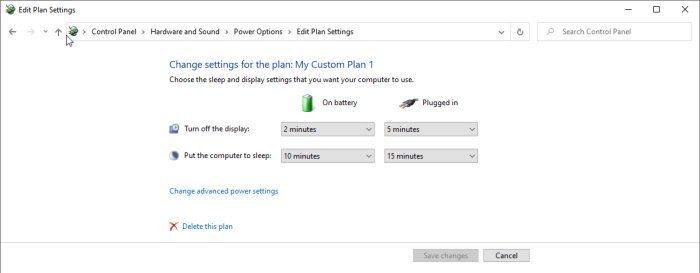
In order to delete a Power Plan on a Windows 11 computer, you need to follow the steps mentioned below.
- Open the Control Panel by searching it out of the Start Menu.
- Change the Category to Large icons and click on Power Options.
- Click on Choose or Customize a Power Plan.
- Then, click on the plan you want to delete, do keep in mind that you will not be able to delete the default plan.
- Finally, click on the Delete this plan button. You will be asked to give your permission, just click on Yes and that plan will cease to exist.
This will delete the plan for you.
2] Delete a Power Plan in Windows 10
Go to Start and click on the Settings icon.
This will take you to the Windows Settings home screen. Click on System, this will take you to the Display options screen.
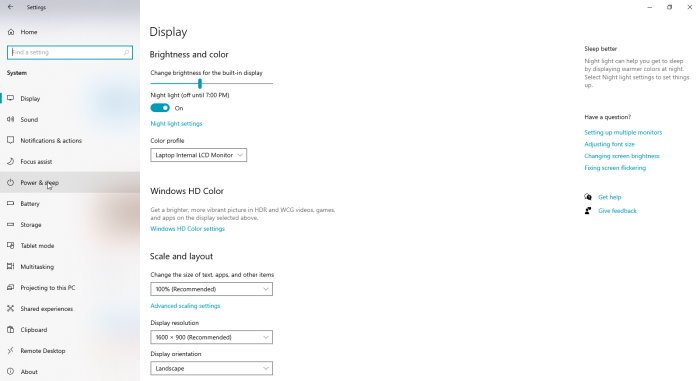
Look to the left panel and click Power and Sleep. This will take you to the Power and Sleep option page which will show the options for making the screen go out when on battery or plugged in and the choice for a time before the PC will go to sleep when on battery or plugged in.
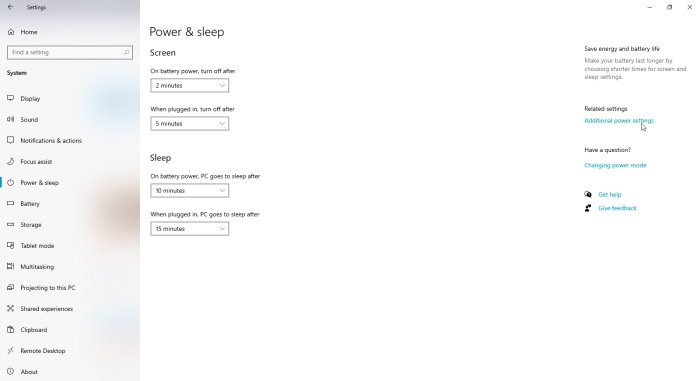
Look to the right and choose Additional Power Settings.
This will take you to a screen where you can Choose or Customize a Power Plan. Here you will see each power plan with a change setting option.
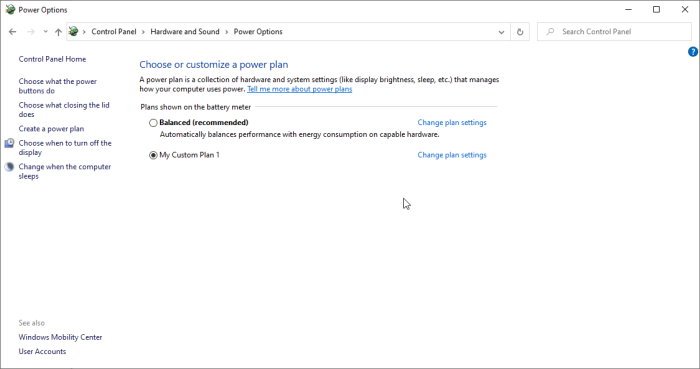
In this option, you will get to modify the Power Plan or delete it. Note that the Balance Power Plan cannot be deleted. Also, note that to delete a power plan, you must select another power plan from the Choose or Customize a Power Plan option screen.
Then you go into the Change Plan Settings for the Power Plan you want to delete and choose Delete.
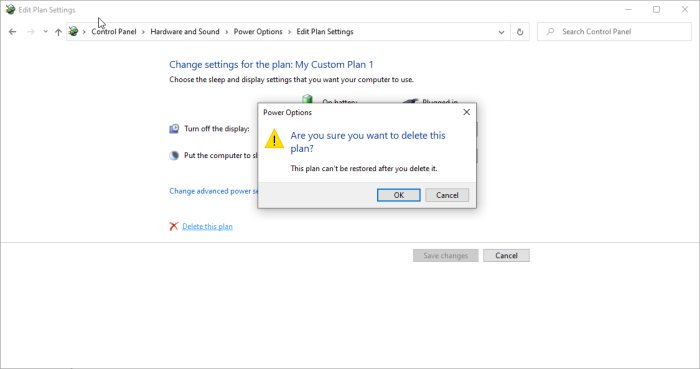
This will bring up a dialogue box asking you to confirm your choice if you want to delete just choose ok.
Power Tweaks for Geeks
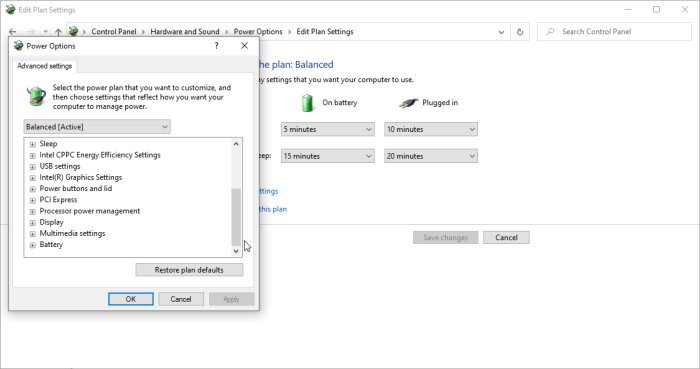
The Power Plan setting can be further tweaked to offer more options to advanced users who know how to get more out of these settings. The user can make certain changes to hardware and software to make them perform differently when on battery power or plugged in. Some of the settings that can be changed are; Windows Explorer, Graphics Card Setting, Multimedia Setting, and Processor Power Management. All these will affect battery life and performance; hence, they can be set to change when plugged in or on battery power automatically. Depending on the setting, they will make the PC use more power or less power, so it will eventually affect your utility bill. You can always change back to the Power Plan’s default if you think you want to keep the original Power Plan setting for the Advanced Options.
Read: How to configure hidden Power Options in Windows.
Power Plans are great ways to enhance your PC’s performance overall. It will need to be deleted for various reasons. Power Plans are sometimes changed by third-party software so if your PC is performing differently after an install, it could be due to a change in the Power Plan by installed software. Power Plans can be further tweaked to suit the needs of the user.